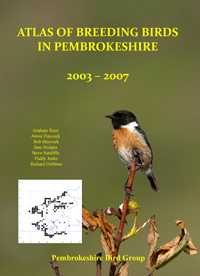Black Tern - 1994
 Thursday, December 22, 2011 at 10:48AM
Thursday, December 22, 2011 at 10:48AM Passage migrant. Not recorded from December to March or in June and July
Mathew (1894) cited only two undated occurrences at Castle Martin and Fishguard, Lockley et al. (1949) adding one shot at St David's in September 1904. Up to six were seen in 15 of the next 32 years, though there were 12 at Skokholm on 8 September 1958. Black Terns have been annual in the autumn since 1981, occurring between 11 August and 11 November, the bulk from mid-August to mid- September. They have been seen in most offshore areas, including Grassholm, Skokholm and Skomer, all around the coastline at localities such as St Ann's Head and Tenby, and on adjacent fresh waters, including Bosherston Pools, but at times of heavy passage are principally seen at Strumble Head. Normally up to six are seen at a time but 23 were at Skokholm on 21 August 1983, 98 at Strumble Head on 14 August 1985 and 100 there on 12 September 1981.
Very few have been seen in Pembrokeshire in the spring; up to three have occurred between 19 April and 8 May but they are not annual.
 1994 BoP in
1994 BoP in  Black Tern
Black Tern 

